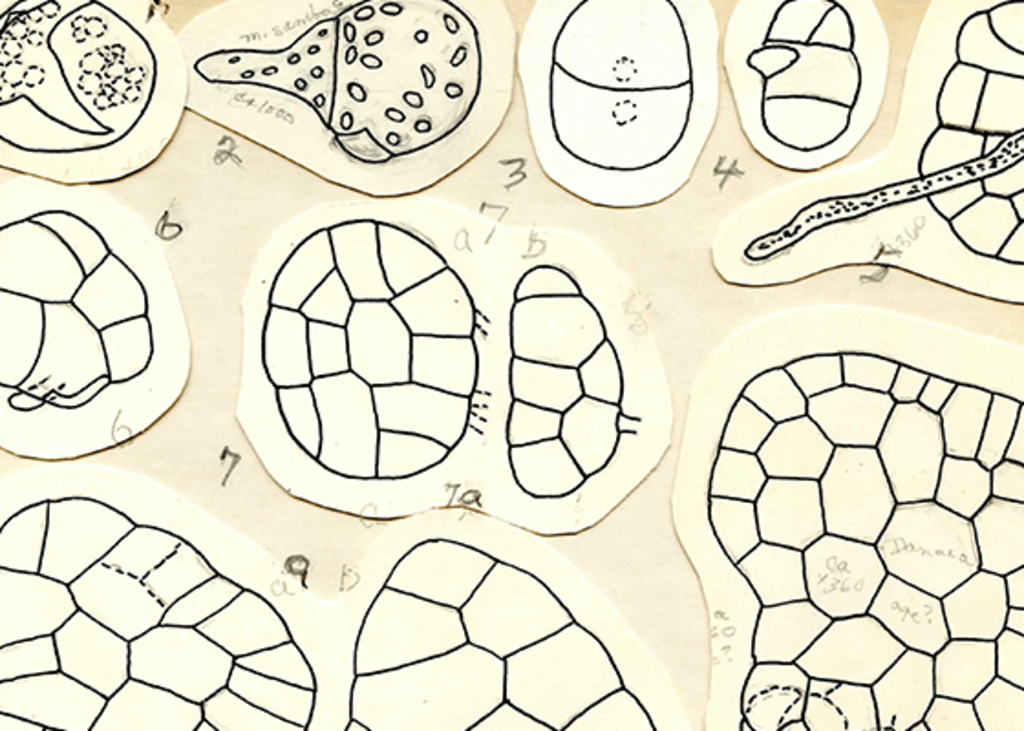Alma Gracey Stokey was a pioneering educator and botanist. Educated at Oberlin College (A.B.) and the University of Chicago (PhD), Dr. Stokey spent the majority of her career at Mount Holyoke where she became a full professor and the chair of the botany department.
Over the course of her career, she wrote over thirty articles on botany with particular regard to the study of ferns (Cyatheaceae, Hymenophyllaceae, Marattiaceae, and Gleicheniaceae). Dr. Stokey became the tenth and first female honorary member of the American Fern Society in 1953. In 1955, Oberlin College awarded her an honorary Doctor of Science degree for her achievements. After her death, her personal papers and field notes were preserved and passed down through three generations of fern biologists.
Eddie Watkins, through his advisor, now has Alma Stokey’s complete collection of personal papers. This collection consists of more than 10,000 gametophyte illustrations from over 200 species and very little of this work has been shared publicly. In fact, ~90% of the collection remains unpublished. Dr. Stokey’s drawings are meticulous and represent an enormous contribution to science and an opportunity to understand the evolution of fern gametophyte biology. In parallel to the morphological drawings, the collection contains dozens of correspondences from some of the most important plant biologists of the time and offer a unique insight into both the development of the discipline and the history of women in botany in the early twentieth century.
The goal of this project is multifold:
- to thoroughly examine, organize, and digitize the Alma Stokey collection in order to create a morphological trait matrix to generate a phylogeny of shifts in fern gametophyte character states. Not only will such an analysis be truly ground-breaking to the field of fern biology, it will, for the first time, offer insight into how morphologically labile independent gametophytes are which will have implications to plant evolution well beyond ferns.
- to construct a digital repository that makes this collection open and freely to anyone in the field in an effort spur further interest in fern gametyophyte morphology.
- to explore the correspondences and add new chapter to the story of pioneering women in science in the early 20th century.
